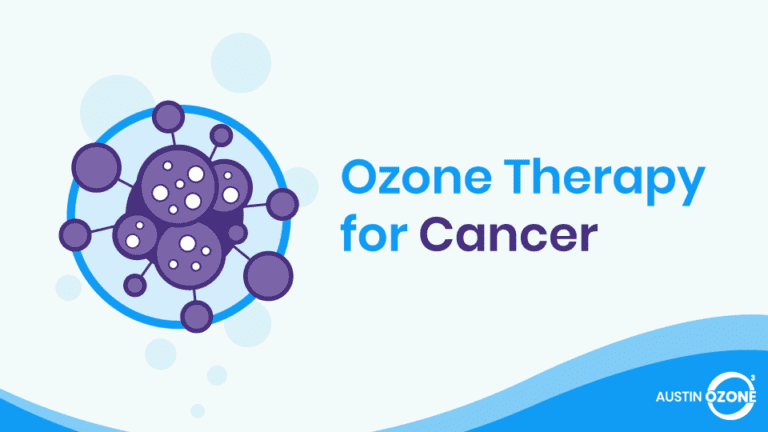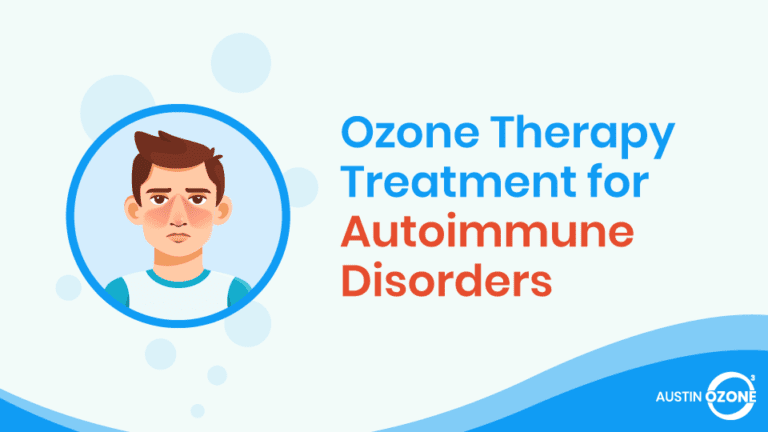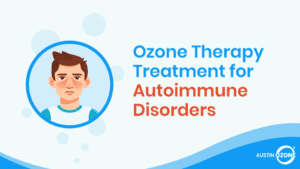Ozone Therapy and Oxidation Overview
Many of us have known ozone (O3) as the gas that protects the planet from harmful ultraviolet rays. Ozone is both a naturally occurring and man-made, unstable and highly reactive gas with three oxygen atoms6.
The instability of ozone makes it easy to break apart and produce a single electron called a free radical, a byproduct in a chemical process known as oxidation.
These free radicals7 are molecules with one or more unpaired electrons. Since electrons are designed to be paired, free radicals either snatch an electron from another stable molecule or donate one. A molecule that loses an electron is now said to be oxidized and becomes a free radical itself.
A study demonstrates that when ozone is oxidized and attached to bodily fluids, the reaction produces more proteins and red blood cells in the body, thus increasing oxygen supply.
The generation of free radicals in the body through oxidation can lead to a series of chain reactions that alter the structure of molecules, genes and cells, causing irreversible damage7. This is the reason oxidation has a negative reputation.
However, a lot of us are unaware that controlled and minimal oxidation is beneficial and necessary for health and wellness8. In fact, the free radicals’6 highly reactive and destructive nature are utilized by the body’s immune system to fight infections caused by viruses and bacteria.
A study10 demonstrates that when ozone is oxidized and attached to bodily fluids, the reaction produces more proteins and red blood cells in the body, thus increasing oxygen supply. At present, many studies about the safety and effectiveness of ozone therapy are being conducted to better establish its therapeutic claims.
Free Radicals’ Dual Role: Oxidant and Antioxidant
Free radicals are molecules that are produced in the cells as byproducts of biochemical oxidation7. These are reactive molecules that are part of the normal cell metabolism and also produced upon exposure to environmental factors such as gamma radiation, cigarette smoke, UV light, and environmental pollutants.
Some toxic compounds such as anticancer drugs4, anesthetics, and analgesics among others can also result in the production of free radicals.
When the production of free radicals gets out of control, it leads to a condition called oxidative stress8. This contributes to the development of chronic and degenerative illnesses such as autoimmune disorders, cancer, aging, rheumatoid arthritis, cataracts, and neurodegenerative and cardiovascular diseases.
Free radicals and oxidants serve a dual role. They are both toxic and beneficial compounds. The two are needed for the cellular structures’ maturation process and can help strengthen the body’s defense system.
The excess free radicals12 alter lipids, proteins, and DNA, leading to permanent damage. However, if free radical levels in the body are lowered back to normal, this can help the body recover from illness.
Free radicals and oxidants serve a dual role. They are both toxic and beneficial compounds. The two are needed for the cellular structures’ maturation process and can help strengthen the body’s defense system.
In moderate concentrations, free radicals and oxidants provide great benefits to the body. As part of the body’s defense mechanism, phagocytes (macrophages, neutrophils, monocytes)12 discharge free radicals to extinguish pathogenic microbes that may cause disease12.
A balance between antioxidants and free radicals is needed for the proper functioning of the body7. The human body has several processes to counteract oxidative stress. One is by producing antioxidants12, which are either naturally produced or externally supplied through food and/or supplements.
However, it is important to do your research and exercise caution, as synthetic antioxidants like butylated hydroxyanisole and butylated hydroxytoluene have recently been reported as harmful to humans.
Ozone Therapy’s Antioxidant Contribution
Ozone therapy helps in the production of antioxidants in the body through its interaction with lipids and the propagation of oxidative stress1, producing free radicals that fight pathogens. This interaction stimulates a strong immune system, effective cell coordination, and increased oxygen delivery.
Ozone causes moderate stress because of its capability to liquefy in the aqueous component of the body’s plasma11. A 2017 study11 in the US on the application of ozone to cancer patients showed that ozone therapy generates a mild oxidative stress, which stimulates an adaptive antioxidant response in healthy tissue, promoting the production of antioxidant enzymes that scavenge on free radicals.
Ozone therapy generates a mild oxidative stress, which stimulates an adaptive antioxidant response in healthy tissue, promoting the production of antioxidant enzymes that scavenge on free radicals.
Another beneficial effect of oxidized ozone is its physiological role in the function of some cellular signaling systems. One example is nitric oxide, the intercellular messenger of blood flow modulation, which is important for nonspecific host defense and for killing tumors and intracellular pathogens. The oxidation of ozone itself destroys pathogens and is central in neutralizing many toxins11.
Aside from these, ozone therapy helps in boosting the immune system by stimulating the release of cytokines and causing the production of white blood cells6, which will respond to the call to fight viruses and bacteria. In this process, it helps the body better fight infections naturally and inhibit tumor growth.
The defense antioxidants provide against infection and diseases comes in three levels8. The first line of defense is the preventive antioxidants, which prevents the formation of free radicals.
The second includes the antioxidants that search for the active radicals in order to prevent chains from being developed as well as to avoid the reactions that may result from the chains’ spread.
The third is the de novo and repair antioxidants. The DNA repair systems also provide an important role in the total defense system against oxidative damage.
Schedule an Ozone Therapy Session Today!
NanoVi for Oxidation Repair
The production of ATP (Adenosine triphosphate) generates free radicals, causing oxidative stress13. The stress prompts the cells to wear out, repair slowly, and malfunction, which could ultimately lead to the onset of diseases and premature aging.
The good news is that there is already an innovative technology that can repair the body at the cellular level, resulting in vitality boost and positive cellular health. NanoVI2 is a technology that produces the same biological signal your body creates to restore the normal and functional state of the cells damaged by free radicals.
NanoVI is a technology that produces the same biological signal your body creates to restore the normal and functional state of the cells damaged by free radicals.
NanoVI is designed to assist in reducing oxidative stress damage by initiating the body to repair and regenerate. The signal from the device enhances the biological signal of your body to fast-track the repair of the cells and to achieve better results.
NanoVI increases the biochemical signals for the production of antioxidants, which fight the oxidative stress brought about by free radical damage5. This increased signaling pathway prevents us from acquiring chronic illnesses and allows us to maintain the normal cellular functional state.
NanoVI counterbalances oxidative stress12, improving the condition of people who suffer from chronic or autoimmune diseases. It also helps maintain good health, slows the effects of aging, stimulates better sleep, and boosts energy.
Conclusion
Since its discovery as an alternative medical treatment for multiple conditions and diseases, ozone therapy has been used to treat many acute and chronic diseases. Studies have also proven that ozone can rejuvenate the body and increase the body’s resistance to pollutants and stressors in the environment.
If you are looking for a technology that can efficiently provide the optimum benefits of ozone therapy, NanoVI is proven safe, effective, and trusted by many medical professionals.
With NanoVI you don’t have to worry about acquiring disease-causing free radicals. It enhances your body’s natural mechanism to produce antioxidants for cellular repair and enhances overall wellness.
Schedule an Appointment Today
References
- Anzolin, A. P., and Bertol, C. D. (2018). Ozone therapy as an integrating therapeutic in osteoartrosis treatment: A systematic review. BrJP, 1(2), 171-175. ISSN 2595-3192. http://dx.doi.org/10.5935/2595-0118.20180033
- Ascent. (n.d.). What is NanoVi™? Retrieved from https://www.ascentadaptation.com/nanovi/
- Cespedes-Suarez, J., Martin-Serrano, Y., Carballosa-Pena, M. R., & Dager-Carballosa, D. R. (2018). The immune response behavior of HIV-AIDS patients treated with ozone therapy for two years. Journal of Ozone Therapy, 2(3). ISSN 2444-9865. http://dx.doi.org/10.7203/jo3t.2.3.2018.11458
- Clavo, B., Rodríguez-Esparragón, F., Rodríguez-Abreu, D., Martínez-Sánchez, G., Llontop, P., Aguiar-Bujanda, D., Fernández-Pérez,L., & Santana-Rodríguez, N. (2019). Modulation of oxidative stress by ozone therapy in the prevention and treatment of chemotherapy-induced toxicity: review and prospects. Antioxidants, 8(12), 588. doi: 10.3390/antiox8120588
- Cryotherapy of Wisconsin. (n.d.). Boost your immune system with NanoVi™. Retrieved from https://cryotherapyofwisconsin.com/boost-immune-system-nanovi/
- Living Wellness Medical Center. (2019, April 3). The benefits of ozone therapy. Retrieved from https://livingwellnessmedicalcenter.com/benefits-of-ozone-therapy/
- Lobo, V., Patil, A., & Chandra, N. (2017). Free radicals, antioxidants and functional foods: Impact on human health. Pharmacology Review, 4(8), 118-126. doi: 10.4103/0973-7847.70902
- Pham-Huy, L. A., Hua, H., & Pham-Huy, C. (2018). Free Radicals, Antioxidants in Disease and Health. Journal of Biomedical Science, 4(2), 89-96
- Pompa, D. D. (n.d.). Supporting cellular cleanup and repair. Retrieved from https://hcfseminars.com/blog/supporting-cellular-cleanup-and-repair/
- Seyam, O., Smith, N.L.., Reid, I., Gandhi, J., Jiang, W. and Khan, S.A. (2018). Clinical utility of ozone for musculoskeletal disorders. Medical Gas Research, 8(3), 103-110. doi: 10.4103/2045-9912.241075
- Smith, N. L., Wilson, A. L., Gandhi, J., Vatsia, S., and Khan, S. A. (2017). Ozone therapy: An overview of pharmacodynamics, current research, and clinical utility. Medical Gas Research, 7(3), 212-219. doi: 10.4103/2045-9912.215752
- Sotler, R., Poljsak, B., Dahmane, R., Jukic, T., Jukic, D. P., Rotim, C., Trebse, P., & Starc, A. (2019). Prooxidant activities of antioxidants and their impact on health. Acta Clinica Cloatia, 58(4), 726-736. doi: 10.20471/acc.2019.58.04.20
- The Ozone Miracle. (n.d.). What is ozone therapy? Retrieved from http://www.theozonemiracle.com/what-is-ozone-therapy/






